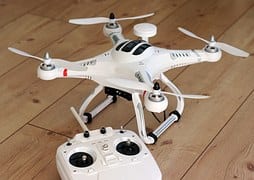A drone is an Unmanned Aerial Vehicle (“UAV”), which is an aircraft that does not have a human pilot aboard. Over the last two years, drones have become as popular as they are controversial. Legal and privacy issues abound, not to mention safety concerns both in the air and on the ground. Still, the Consumer Technology Association estimated that 700,000 drones were sold in 2015 – 400,000 alone during the holiday season.
Commercial and non-commercial applications are taking over the landscape. Drones are now being used for aerial surveying of crops, film-making, news coverage, search and rescue, inspections and surveys, delivering products and supplies, in manufacturing and in law enforcement. Drones also have numerous marketing applications. Construction and real estate industries are increasingly using drones to develop marketing assets and other industries are following their lead.

In response to drone use proliferation, regulatory agencies, from the FAA to municipal authorities, are attempting to establish a framework to govern the use of drones as their prominence outpaces regulations. Obviously, there is a lot to consider should you or a client contemplate the use of drones. What follows is an overview of what you need to know before using a drone:
Operator lessons:
- Wind, weather (cold effects battery life and makes plastic more frail, and rain/moisture can corrode components), and obstacles can lead to operating unpredictability
- Loss of GPS signal can lead to loss of operator control
- FAA requires operator to fly with line of site: You may have a camera, but you can’t see above or behind the drone on a monitor
- When drone rotates 180 degrees, the controls switch: left becomes right, forward becomes backward
FAA Legal Landscape
- FAA has established their regulatory authority over drones and categorized use into hobby/recreational and commercial (FAA drone regulations page)
- Final regulations to govern drone operation are being developed. In the interim, commercial use of drones must obtain a Section 333 Exemption from the agency
- Section 333 Exemptions require the operator to have a pilot’s license
- Current FAA regulations require all drones to be registered with the FAA; the registration number to be marked on the drone; and operators must be older than 13 years of age
- Proposed regulations would require operators to pass a knowledge test; limit drone size to 55lbs; impose a flight ceiling of 500ft; and limit maximum speed to 100mph
State and Local Legal Landscape
- The FAA has asked state and local authorities to assist them with enforcing regulations
- 20 states, including Maine, have passed their own laws, mostly pertaining to privacy, hunting and fishing, and to regulate use by public safety agencies i.e. prohibiting weaponized use and limiting surveillance use.
- Many municipalities have also passed ordinances to protect property and privacy rights and to extend perimeters around airports.
- The City of Pittsburgh has banned use in public parks; Los Angeles has imposed a 400ft flight ceiling and extended the airport perimeter; Chicago has prevented their use above schools, churches, and private property; and some small towns have banned use outright
Clouding the legal landscape further, the FAA recently indicated their concern that state and municipal regulation of drones could lead to fractionalization of authority. Subsequently, the FAA released guidance that recommended circumstances under which states and municipalities can implement laws. Circumstances include privacy, noise, hunting and fishing, and public safety use.
What is clear is that applications for drones are on the rise and the potential for drones to be used as a marketing asset is promising. However, the risk potential is equally promising if operated improperly and ignorant of regulatory requirements, potentially turning a promotional asset into a crisis communications incident.
For more information, visit: Bernstein Shur Drone Law Team

